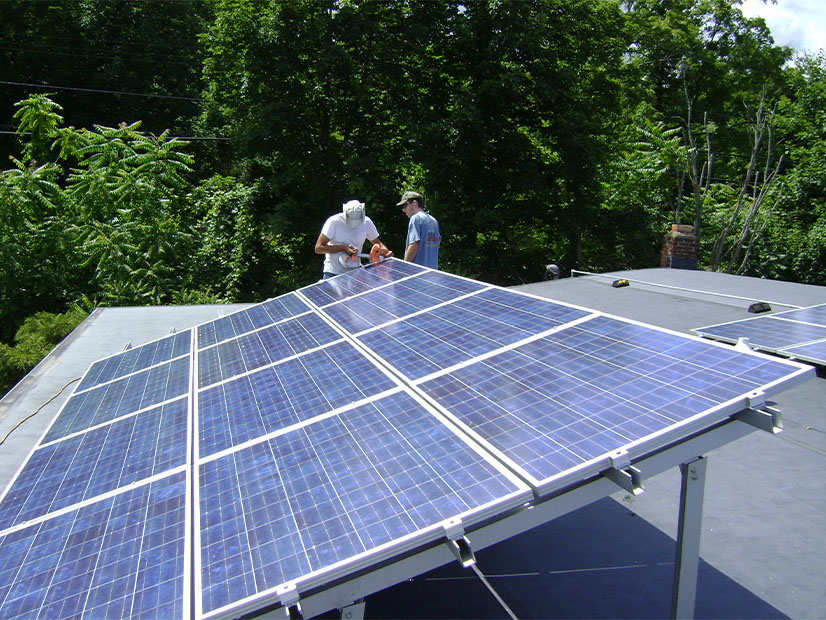
In a white paper released on Wednesday, NERC’s System Planning Impacts from Distributed Energy Resources (SPIDER) Working Group warned that traditional approaches to power system planning analysis may not be adequate for the spread of distributed energy resources like rooftop solar panels and battery energy storage systems.
NERC formed the SPIDER group in 2018 to study the effect of distributed solar and battery facilities on bulk electric system reliability. The move was inspired in part by incidents like 2016’s Blue Cut Fire in California, when a fault on a transmission line led to the loss of about 1.2 GW of solar generation. (See FERC Accepts New Inverter Standard.) The group’s work includes reliability guidelines related to DER forecasting and modeling practices, as well as the standard authorization request for Project 2022-02 (Modifications to TPL-001-5.1 and MOD-032-1). (See NERC RSTC Revisits Rejected Standards Projects.)
Wednesday’s white paper provides an overview of SPIDER’s “efforts to quantify and qualify the manner in which DERs are changing the system planning process”; some of the issues related to the representation of DERs in power system planning models; and the DER-related gaps in existing planning methods that new software can help to bridge. It was created in collaboration with “a range of industry participants … representing utilities, ISOs, consultants and OEMs [original equipment manufacturers],” along with software vendors.
SPIDER pointed out in the report that rooftop solar and battery systems were “viewed as a distribution system concern only” when first introduced to the grid; however, events like the Blue Cut Fire proved this assumption incorrect. Citing studies in areas like Hawaii and California, the paper asserted that utilities will need to expect “a number of impacts on the bulk electric system” from DERs and warned that existing planning tools are inadequate for accounting for their effects.
“Future power system studies will require software tools that can track a large number of distributed resources … while providing the ability to observe and adjust the output of these resources across the entire simulation,” the white paper said. “At the same time, the addition of new DER tracking capabilities will need to be balanced against the increase in complexity for the user and data fidelity requirements that they will cause.”
The paper also identified “seams” between different types of power system studies, most notably between transmission and distribution studies. Because DERs straddle both of these elements of the BES, it is no longer sufficient to study them in isolation, the report warned; for example, when DERs inject power into the grid, they can impact the voltage and current dynamics of the distribution system along with “changing power flows at the bulk transmission level.”
In the short term, power system planners can improve the ability of transmission and distribution software tools to share data, but even with this, DERs present a challenge that may be difficult for a single software tool to analyze. A longer-term solution can be provided by co-simulation tools that are currently in “earlier development stages” and that might be able to “describe the full behavior of the system” as a whole.

